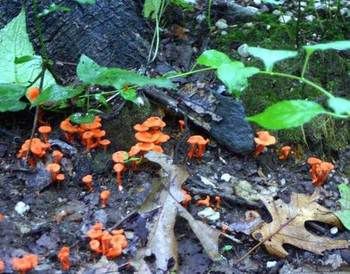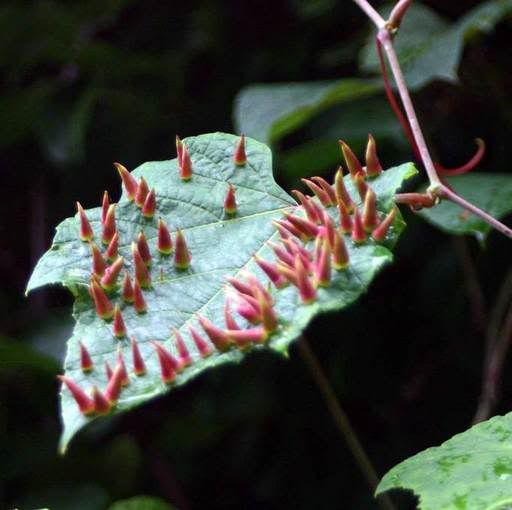
I spent this past weekend in Northport, Long Island, visiting friends. It was a pleasant getaway. Like my recent trip to Washington, D.C., however, this weekend escape made my dissatisfaction with New York City living more acute.
My father spent a good deal of his youth on Long Island. In the 1940s and 1950s, when the island peninsula's many small towns were buffered by undeveloped land, he would break down his shotgun, place it in his bike basket and pedal his way to the local landing. He hunted ducks in the tidal marshes and fished in the sound.
Today, little of Long Island remains undisturbed and few residents are philosophically or professionally attached to the land. Like northern New Jersey and southwestern Connecticut, suburban sprawl has claimed much of the island. The effects of sprawl extend beyond habitat destruction, perverting the perspective of everyone who grows up among the 7-11s, subdivisions and cinema multiplexes.
My friends and I crashed a party comprised mostly of born-and-bred Long Islanders. Several of the guests talked excitedly about real estate, property taxes, SUVs and Florida retirement. I felt as though I'd walked into a Todd Solondz film.
When I commented to the host that the view from her second story patio, surrounded on three sides by tall trees, was pleasant, she replied, “I hate nature. Pave it all over and the world will be a better place.” I smiled at her and waited for a knowing wink or some other signal that she was joking. None came. After some long seconds she resumed the cheerleading conversation she was having with an old friend. “Be Aggressive! B-E-Aggressive!,” they shouted between laughs. Shocked into a brooding, drunken silence, I excused myself. “Material Girl” was playing on the stereo and the host’s sleepy five-year old daughter was half-watching ”Finding Nemo” on the television.

Fortunately, suburban ugliness has not claimed everything on Long Island. I enjoyed my visits to area parks. On Saturday morning, my friend Philip and I wandered around a salt water estuary near King’s Park. I was happy to see great egrets (Casmerodius albus), snowy egrets (Egretta thula), herring gulls (Larus argentatus), killdeer (Charadrius vociferous) and bank swallows (Riparia riparia). Even the invasive mute swans (Cygnus olor) were a welcome sight (though I still advocate extensive control measures given their destructive tendencies). A striper (Morone saxatilis) fisherman crossed over a small island as he waded to shore, sending several unidentifiable plovers scurrying. On a nearby mudflat, clams and mussels betrayed their location by shooting geysers of water high into the air as they burrowed beneath the surface to feed. Taking all this in, I felt good about life.
After an hour spent walking the beach, Philip and I moved inland and entered King’s Park, proper. This park was, until 1996, a psychiatric facility. Wandering the abandoned grounds is eerie but pleasant. There is a strict prohibition on photography (made explicit by a grounds keeper), but Philip and I did peek through some broken windows to study the buildings’ interiors. One can’t help but imagine these decaying rooms as they once were, filled with patients, many of them shell-shocked members of the “greatest generation."
In a few years, these buildings will all be destroyed and King’s Park turned into a luxury condominium development. No longer will area teenagers slip into the abandoned buildings at night to drop acid, smoke pot and spray-paint “Get Blunted” on the walls. Such is progress.

identified by Garrett Herth
Sunday morning, walking on a trail closer to my friends’ apartment, we came across some grape vines that were infected by two different types of parasite. One parasite I later identified as grape phylloxera (Daktulosphaira vitifoliae), a common parasite that leaves circular, whitish-green galls, a type of sore or growth, on the leaves, but only rarely does serious damage to the plant. The other parasite is pictured below. It was later identified [by Garrett Herth in February 2008] as a Grape Tube Gallmaker (Cecidomyia viticola).

On the Long Island Rail Road return trip, I had the misfortune of sitting in a car with a screaming baby. The mother was determined to ignore the baby's wails, a technique I usually advocate, but after five minutes of uninterrupted howling, I began wishing that she'd adopt a new tactic. Fifteen minutes later, I abandoned my efforts to read and instead studied the passing towns, each of them indistinguishable from the last excepting the name on the water tower.
I recalled the spike-like parasite on the grape leaf. How remarkable the evolution and success of such creatures! How admirable, if disturbing, is the lifecycle of a nematode or tick! The baby continued to cry. As we neared New York City the buildings grew taller and the advertisements larger.
Photo credit: all images, Hungry Hyaena, 2005

6 comments:
That paragraph about the SUV-party is a bit depressing. Almost sounds like its out of a book...
Nice photos.
It was depressing.
I keep trying to convince myself that the host was joking, but I really don't think she was. It all fit together in a perfectly awful fashion, what with their cheerleading and the Madonna playing. (For the record, I like Madonna well enough, but it was icing on the misery cake in this situation.)
Like many people who write often, I've been known to rearrange details to make a narrative more engaging, but in this case, nothing needed moving. Although, to be fair, "Lucky Star" was playing when I first started to leave and "Material Girl" came on as I made my way downstairs.
The spiked leaf parasites may be insect eggs. They remind me - in a more pointed form - of monarch butterfly eggs.
Good luck with identification...
OK, so I have no resources to back me up, but I can venture a pretty educated guess about the 'candy-corn.' They are, most likely, growths caused by insect eggs. In a staggering display of evolutionary complexity, the insect eggs selectively derepress genes that exist in the plant's DNA. Unlike bacterial galls, which are undifferentiated masses of cells, the insect creates a tiny 'condo' for the larva to live in... cuisinarts, dishwasher and all, so to speak.
Most likely, if you were to break one of those open, you'd find the little grub in there watching Queer Eye for the Straight Bug.
I'm thouroughly blown away by the fact that this sort of selective derepression can go on across the plant/animal kingdom divide.
I could go on... But I'll stop and summarize: Insect gall=wicked cool
It could also be a gall caused by a mite...
... or aliens
Much of Long Island is breathtakingly beautiful... and at least a few of the inhabitants appreciate the "nature" side.
:-)
Alison:
Indeed, Long Island does have many beautiful areas, and I'm glad that you're enjoying them!
Post a Comment